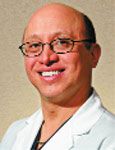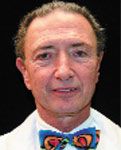- General Dermatology
- Eczema
- Chronic Hand Eczema
- Alopecia
- Aesthetics
- Vitiligo
- COVID-19
- Actinic Keratosis
- Precision Medicine and Biologics
- Rare Disease
- Wound Care
- Rosacea
- Psoriasis
- Psoriatic Arthritis
- Atopic Dermatitis
- Melasma
- NP and PA
- Skin Cancer
- Hidradenitis Suppurativa
- Drug Watch
- Pigmentary Disorders
- Acne
- Pediatric Dermatology
- Practice Management
- Prurigo Nodularis
Article
Geriatric dermatology a subspecialty in the making
Author(s):
National report - The aging of the baby boomers and life-extending advances in medical research, technology and pharmaceuticals have begun to have a profound impact on the practice of dermatology.

Increasing numbers of older Americans are seeking treatment for cosmetic concerns as well as for the dermatologic problems typically associated with aging.
The 65-and-older population will grow by about 3 percent a year after about 2010, and already, dermatologists' offices nationwide are experiencing growth in that age group among their patient population.
"Seeing patients 70 and above has become commonplace in my practice over the past three or four years," Dr. Hirsch says. "It's an amazing evolution - people don't want to look older because even in their 60s and 70s, they're feeling younger, they're more active and they want to look the way they feel.
"We're doing the same kind of treatments on older patients as we do on younger ones," she says. "The philosophy and techniques are pretty much the same for older as for younger, though with older patients it tends to be volume replacement rather than the more intrusive lifting procedures."
Still, treatments for the older population differ from treatments for younger patients, as the severity of skin damage increases with age, skin characteristics change, and overall health status - including the range of medications taken - becomes an increasingly important factor.
David J. Goldberg, M.D., echoes Dr. Hirsch's opinion regarding invasive treatments.
The general rule has been that noninvasive skin-tightening procedures do nothing for the older patient, thus making surgery the only alternative, says Dr. Goldberg, director of Skin Laser & Surgery Specialists of New York and New Jersey and director of Mohs Surgery and Laser Research at New York's Mt. Sinai School of Medicine. But this may no longer be the case, he says.
"We just completed a study - recently submitted for publication - that shows that a near-infrared light-based device can lead to significant tightening of hanging neck or jowl skin, even in older persons," he says. "Thus, they do not always need surgery."

"In general, the problems we see in younger people are worse in older people," Dr. Goldberg says. "Most specifically, signs of photodamage in a 35- to 45-year-old will be much worse in a 55- to 70-year-old patient. Thus, where nonablative treatments for skin quality, such as mid-infrared lasers or intense pulsed light (IPL) devices, are perfectly appropriate in the younger person, a more aggressive approach - such as fractionated resurfacing, plasma resurfacing or erbium laser resurfacing - will be more appropriate for the older person."
Medical, cosmetic changes
As longevity increases, Dr. Goldberg says, dermatologists will begin to see more older patients with skin problems, as opposed to those who simply want to look younger.






